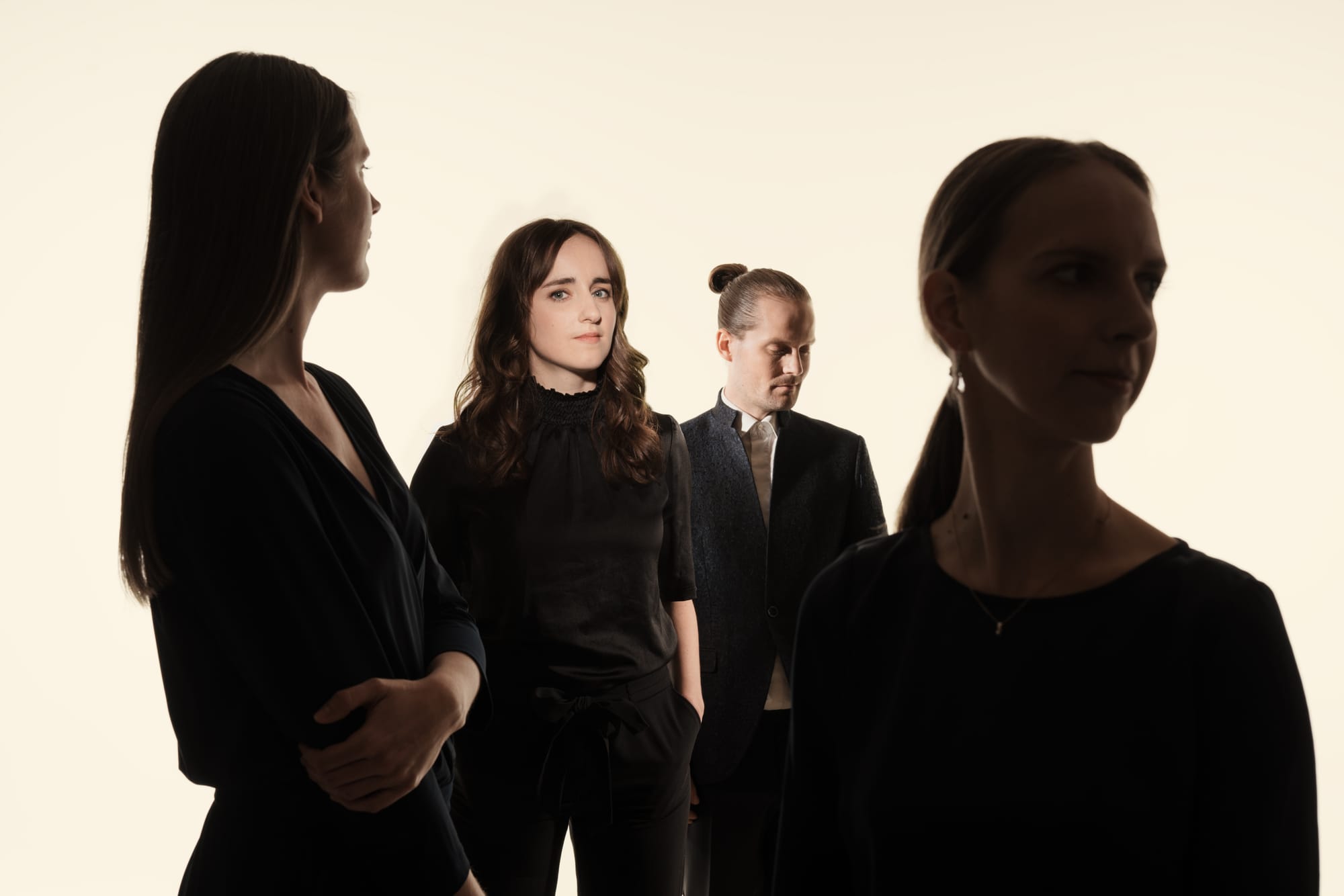Dudok Quartet Amsterdam at Wigmore Hall

Mozart, Tchaikovsky Dudok Quartet Amsterdam. Wigmore Hall, 1pm, 01.06.2025
Mozart String Quartet No. 14 in G, K 387 (1782)
Tchaikovsky String Quartet No. 2 in F, Op. 22 (1874)
The Dudok Quartet Amsterdam comprises Judith van Dreel and Marleen Wester, violins, Marie-Louise de Jong, viola, and Davd Faber, cello. The group plays on unwound gut strings and period bows.
The Mozart is a nice companion to Tchaikovsky’s lovely Second Quartet (he Dudok Quartet records for Rubicon and has been releasing the three quartets, each coupled with their own arrangements of movements from Tchaikovsky’s The Seasons arranged for quartet). Witten in Vienna in 1782, K 384is sometimes nicknamed ‘Spring’; it is the first of the six so-called ‘Haydn Quartets’. It is certainly perfect Sunday morning fare, is finale characterised by its fugal writing that foreshadows that of the finale of the Symphony No. 41, ‘Jupiter’.
The performance here was as fascinating as it was lovely. The first movement (Allegro vivace assai) was superbly fresh (and together). The gut strings do make a difference to clarity, but I do wonder what the quartet’s approach to vibrato is? The first violin, Judith van Dreel, used the most, sometimes beginning a held note without vibrato and adding it towards the end. She also used a rather nice amount of rubato in her solo/cadenza moment. There were some contradictions, though: the viola’s semiquavers were articulated rather more clearly than in cellist David Faber’s response, for example. The quartet highlighted the more ’modern’ aspects of Mozart’s writing in the Minuetto, but when it came to the Andante cantabile, I might have guessed ‘Adagio’ as the indicator. A beautifully hushed moment, and superb dialogue between second violin and viola were the highlights there before that counterpoint-defined finale, full of ‘Jupiter’ symphony energy and sinewy chromaticisms.
Tchaikovsky’s String Quartet No. 2 was first performed in February 1874 to an audience that included Anon Rubinstein. Later, the Moscow critic Herman Laroche praised the work for its innovations and originality, comparing it to the more folk-based Third Symphony. The Second Quartet begins with. 'stab' of dissonance, more pronounced at Wigmore Hall than on their Rubicon recording; as if to emphasise this, Judith van Dreel’s violin ‘outbursts’ were more operatic in nature. There are orchestral sonorities here, well delivered, while the Scherzo was epitome of charm, balance impeccable, dialogue between the two violins impeccable. Despite the surface charm, the Dudok Quartet maintained an undercurrent of tension. The mapping of the slow movement’s opening ‘cry’ onto that of the first movement is more pronounced in the Rubicon recording, but still audible in this performance; and, as in the Mozart, the Wigmore performance felt more Adagio than th proscribed Andante. But the finale was a fine account, the opening rhythms tight. Marleen Wester’s launch of the counterpoint in this movement was superb; another special moment was van Driel and de Jong in perfect octaves with Wester providing internal energy.
In the final analysis, I do find the recording of the Tchaikovsky more satisfying on disc. Consistency is the key there, and there was the odd inconsistency that marred the lunchtime: a perfect violin phase ending that, in cello echo, was workaday, for example.
The Dudok’s recordings of the Tchaikovsky Quartets have been coupled with the Quartet’s own arrangements of movements of Tchaikovsky piano cycle The Seasons, one of which would have surely made the perfect encore. Instead, it was to Shostakovich the choice fell. Or almost didn’t: the applause had all but stopped, and when the Dudok Quartet entered, it did feel a little bit as if we were going to have an encore whether we wanted one or not. The extra in the end was Shostakovich: the Prelude Op. 34/24, again in their own arrangement, bracing and spiky. There is, incidentally, a YouTube of a performance of this arrangement by them at Amsterdam’s Muzikgebouw in late December 2022:
